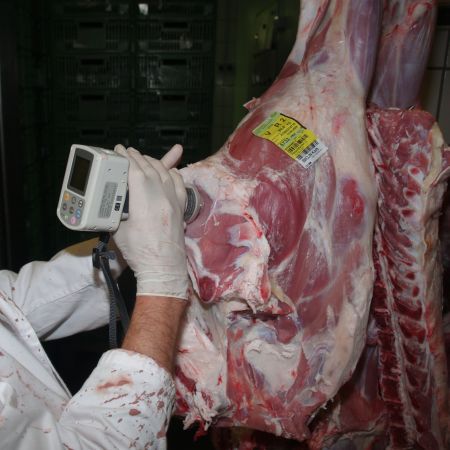Efforts to offer consumers red (dark) veal have not yet been implemented. In practice (farmers, consultants, slaughterhouses) it is stated that calves fed with whole milk and supplementary feed such as concentrated feed, hay, straw (usually organic farms or small farms that fatten a few calves each year) often have meat color that is too dark show. According to Weissensteiner et al. (2006) around a quarter of the organic calves slaughtered in Austria have a meat color that is too dark. In practice, there is great uncertainty regarding factors influencing veal color. Several studies show that meat color, blood hemoglobin content and iron supply from feed are closely correlated.
The pressure from the trade on calf farmers to produce veal with a light color is increasing. For organic calves, there are price reductions for meat color 5 (assessment by classifiers based on an eight-part color scale (1=light, 8=dark)); Rewe, yes! Of course, only calves up to color class 4 are marketed.
In order to preserve and strengthen local agriculture (and in particular local veal production), it is therefore important to give a niche product such as veal a chance to regain a stronger foothold in the domestic meat market through this project.
The aim of the project is to provide advisors and farmers with whole-milk calf fattening with advice and documents that clarify what causes veal to be too dark in color and what measures can be taken to prevent this.
- Determination of the influencing factors that influence meat color by studying the literature and conducting experiments
- Clarification of the connection between veal color, blood hemoglobin content, feeding, husbandry system and individual animal factors such as age at slaughter, meatiness and gender
- Development of strategies that ensure light meat color without causing anemic health conditions
- Derivation of advice recommendations
- Development of a checklist (feeding, husbandry, genetics, age at slaughter, etc.) for calf fattening farms to prevent the meat from becoming too dark in color
Further information on project management can be found in the database for research and sustainable development (Dafne) -> Link







